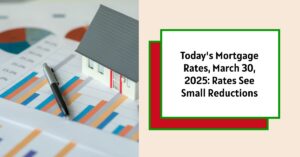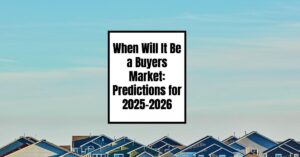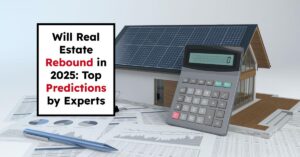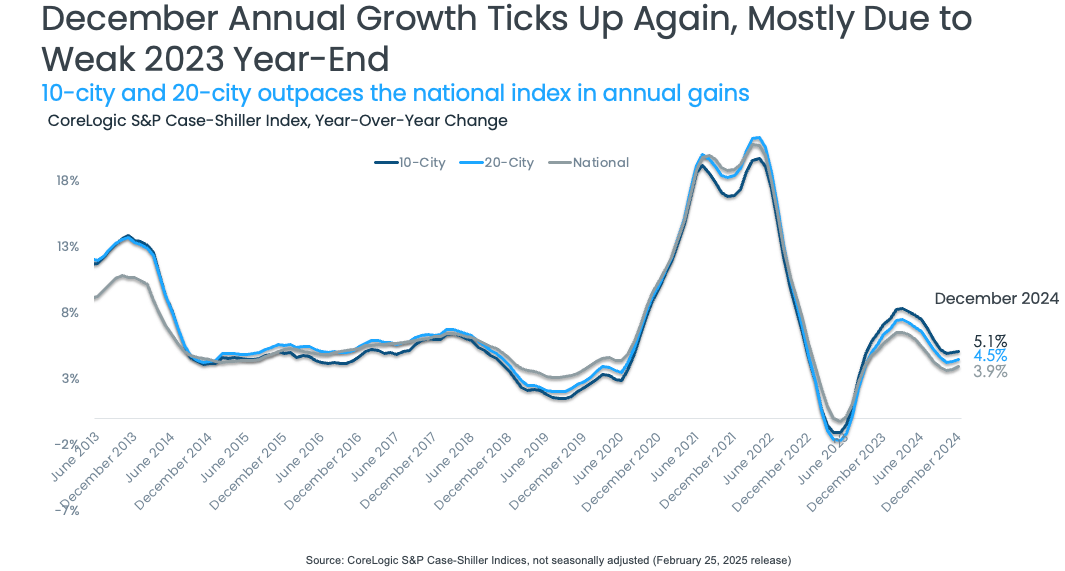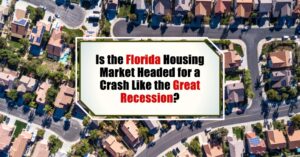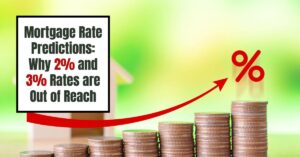Today, March 30, 2025, potential homebuyers and those looking to refinance are seeing a slight dip in mortgage rates. According to recent data from Zillow, the average 30-year fixed mortgage rate has edged down to 6.59%, a decrease of three basis points. Similarly, the 15-year fixed rate has seen a small decrease, settling at 5.91%, down by four basis points. While this offers a bit of relief, experts predict that significant drops in home loan rates are unlikely in the immediate future.
Today's Mortgage Rates, March 30, 2025: Slight Decrease Offers a Glimmer of Hope
Key Takeaways:
- Slight Decrease Today: Both 30-year and 15-year fixed mortgage rates have seen a minor decrease today, March 30, 2025.
- Rates Expected to Remain Elevated: Forecasts from Fannie Mae and the Mortgage Bankers Association suggest that mortgage rates will likely stay relatively high throughout much of 2025.
- Refinance Rates Also See Minor Drops: Similar to purchase mortgages, refinance rates have also experienced small reductions today.
- Long-Term Goals Matter: When choosing between a 15-year and 30-year mortgage, consider your short-term cash flow needs versus long-term interest savings.
- Focus on Financial Health: Improving your credit score and lowering your debt-to-income ratio are key factors in securing a lower mortgage rate.
Current Mortgage Rates on March 30, 2025
For those looking to purchase a home, understanding the current landscape of interest rates is crucial. As of today, March 30, 2025, the average national mortgage rates are as follows, based on the latest information from Zillow:
| Loan Type | Interest Rate |
|---|---|
| 30-Year Fixed | 6.59% |
| 20-Year Fixed | 6.41% |
| 15-Year Fixed | 5.91% |
| 5/1 ARM | 6.82% |
| 7/1 ARM | 7.13% |
| 30-Year VA | 6.09% |
| 15-Year VA | 5.67% |
| 5/1 VA | 6.22% |
It's important to remember that these figures represent national averages and can fluctuate based on your individual financial situation, the specific lender, and other market factors.
Current Mortgage Refinance Rates on March 30, 2025
Homeowners considering refinancing their existing mortgages will also find slight decreases in rates today. Here are the average national mortgage refinance rates as of March 30, 2025, according to Zillow:
| Loan Type | Interest Rate |
|---|---|
| 30-Year Fixed | 6.55% |
| 20-Year Fixed | 6.27% |
| 15-Year Fixed | 5.84% |
| 5/1 ARM | 6.54% |
| 7/1 ARM | 6.56% |
| 30-Year VA | 6.20% |
| 15-Year VA | 5.86% |
| 5/1 VA | 6.26% |
| 30-Year FHA | 6.18% |
| 15-Year FHA | 6.04% |
Interestingly, while it's commonly assumed that refinance rates are higher than purchase rates, the data today shows a mixed picture. For certain loan types, the refinance rate is slightly lower than the corresponding purchase rate. This highlights the importance of checking current rates carefully when considering a refinance.
Understanding Fixed-Rate Versus Adjustable-Rate Mortgages
When navigating the world of mortgages, two primary types stand out: fixed-rate mortgages and adjustable-rate mortgages (ARMs). A fixed-rate mortgage offers stability, as the interest rate remains the same for the entire loan term. This predictability can be very appealing for budgeting and long-term financial planning. Whether you opt for a 30-year or a 15-year fixed-rate, you can rest assured that your principal and interest payments will not change over the life of the loan, unless you choose to refinance.
On the other hand, an adjustable-rate mortgage (ARM) starts with a fixed interest rate for a specific period, after which the rate adjusts periodically based on prevailing market conditions. For example, a 5/1 ARM has a fixed rate for the first five years, then adjusts annually. Similarly, a 7/1 ARM has a fixed rate for seven years before annual adjustments begin. Historically, ARMs have often offered lower initial interest rates compared to fixed-rate mortgages, making them attractive to some borrowers. However, the risk lies in the potential for the interest rate to increase after the initial fixed-rate period, which could lead to higher monthly payments. In today's market, it's worth noting that sometimes the initial fixed rates on ARMs can even be higher than some fixed-rate options, so careful comparison is essential.
The Trade-Off: 30-Year vs. 15-Year Fixed Mortgage Rates
The choice between a 30-year fixed mortgage and a 15-year fixed mortgage is a significant one for most homebuyers. The 30-year fixed mortgage is the more popular option due to its lower monthly payments. By spreading the loan repayment over 360 months, the monthly burden on your finances is reduced, making homeownership more accessible for a wider range of people. However, the trade-off is that you will pay significantly more interest over the life of the loan.
In contrast, a 15-year fixed mortgage offers a much shorter repayment period and typically comes with a lower interest rate. While the monthly payments will be higher because you're paying off the same loan amount in half the time, you'll save a substantial amount on interest in the long run and own your home outright much sooner. This option is often favored by those who have a higher income and are comfortable with larger monthly payments, allowing them to build equity faster and become debt-free sooner.
Recommended Read:
Mortgage Rates Trends as of March 29, 2025
Mortgage Rates Drop: Can You Finally Afford a $400,000 Home?
Expect High Mortgage Rates Until 2026: Fannie Mae's 2-Year Forecast
Let's consider an example. Suppose you take out a $300,000 mortgage. With today's average 30-year fixed rate of 6.59%, your estimated monthly principal and interest payment would be around $1,914. Over the entire 30-year term, you would end up paying approximately $389,038 in interest. Now, if you opted for a 15-year fixed mortgage at the average rate of 5.91% for the same $300,000 loan, your estimated monthly payment would rise to about $2,517. However, the total interest paid over the 15-year term would be significantly lower, at approximately $153,061. This clearly illustrates the long-term financial impact of choosing different loan terms.
Monthly Payment on $150k Mortgage
Based on today's 30-year fixed mortgage rate of 6.59%, the estimated monthly principal and interest payment on a $150,000 loan would be approximately $957. For a 15-year fixed mortgage at 5.91%, the estimated monthly payment on $150,000 would be around $1,259.
Monthly Payment on $200k Mortgage
Using the current average 30-year fixed rate of 6.59%, a $200,000 mortgage would result in an estimated monthly principal and interest payment of about $1,276. If you chose a 15-year fixed mortgage at 5.91% for $200,000, your estimated monthly payment would be approximately $1,678.
Monthly Payment on $300k Mortgage
As we discussed earlier, a $300,000 mortgage at today's average 30-year fixed rate of 6.59% has an estimated monthly principal and interest payment of around $1,914. Opting for a 15-year fixed mortgage at 5.91% for the same loan amount would result in an estimated monthly payment of about $2,517.
Monthly Payment on $400k Mortgage
For a $400,000 mortgage at the current average 30-year fixed rate of 6.59%, the estimated monthly principal and interest payment would be approximately $2,552. Choosing a 15-year fixed mortgage at 5.91% for $400,000 would lead to an estimated monthly payment of about $3,356.
Monthly Payment on $500k Mortgage
If you were to take out a $500,000 mortgage at today's average 30-year fixed rate of 6.59%, your estimated monthly principal and interest payment would be around $3,190. Selecting a 15-year fixed mortgage at 5.91% for $500,000 would result in an estimated monthly payment of roughly $4,195.
It's crucial to remember that these are just estimates for principal and interest. Your total monthly mortgage payment will also include other costs such as property taxes, homeowners insurance, and potentially private mortgage insurance (PMI), depending on your down payment.
Looking Ahead: Mortgage Rate Forecasts for 2025
While today's small decrease in mortgage rates might be welcome news, it's important to consider the broader outlook. According to the March 2025 forecasts from Fannie Mae and the Mortgage Bankers Association (MBA), significant drops in rates are not expected in the near term.
Fannie Mae predicts that the average 30-year fixed mortgage rate will be around 6.5% in the second quarter of 2025, with a gradual decline expected throughout the rest of the year, reaching approximately 6.3% by the end of 2025. The Mortgage Bankers Association's forecast is slightly higher, predicting an average of 6.8% for the 30-year fixed rate in the second quarter.
Mark Palim, Senior Vice President and Chief Economist at Fannie Mae, noted that the recent pullback in mortgage rates could provide a small boost to home sales this year. He believes that rates will continue to move slightly lower and could be low enough to encourage some buyers who have been waiting on the sidelines to enter the market [Fannie Mae].
These forecasts suggest that while we might see some fluctuations, mortgage rates are likely to remain in the mid-6% range for much of 2025. For potential homebuyers, this means that waiting for a dramatic drop in rates might not be the most effective strategy. If you are financially prepared to buy a home, the current environment could be as good a time as any. Focusing on improving your financial profile to secure the best possible rate currently available is likely a more productive approach than trying to time the market.
Work With Norada, Your Trusted Source for
Real Estate Investment in the U.S.
Investing in turnkey real estate can help you secure consistent returns with fluctuating mortgage rates.
Expand your portfolio confidently, even in a shifting interest rate environment.
Speak with our expert investment counselors (No Obligation):
(800) 611-3060
Also Read:
- Will Mortgage Rates Go Down in 2025: Morgan Stanley's Forecast
- Mortgage Rate Predictions 2025 from 4 Leading Housing Experts
- Mortgage Rates Forecast for the Next 3 Years: 2025 to 2027
- 30-Year Mortgage Rate Forecast for the Next 5 Years
- 15-Year Mortgage Rate Forecast for the Next 5 Years
- Why Are Mortgage Rates Going Up in 2025: Will Rates Drop?
- Why Are Mortgage Rates So High and Predictions for 2025
- Will Mortgage Rates Ever Be 3% Again in the Future?
- Mortgage Rates Predictions for Next 2 Years
- Mortgage Rate Predictions for Next 5 Years
- Mortgage Rate Predictions: Why 2% and 3% Rates are Out of Reach
- How Lower Mortgage Rates Can Save You Thousands?
- How to Get a Low Mortgage Interest Rate?
- Will Mortgage Rates Ever Be 4% Again?
